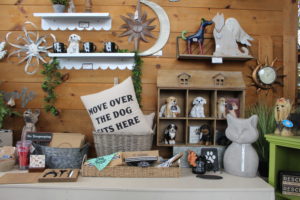Let Me Explain… The Five Elements of Small Business Success
I think the toughest part about keying in on five steps or elements of small business success is identifying which elements to eliminate. I started the list with 16 key components and began to refine the selections. How? I looked at the most successful businesses that I have worked with over the years, winners of the many awards programs I have judged and stores that received some type of media coverage.
Below is my list of the top five. Disclaimer: you may disagree with some of the selections. I say that because I disagree with a couple. I know that might sound strange! The criteria and grading system I established eliminated some personal favorites. However, rest assured that the top five cover all of the marketing components for success.
Therefore, while accounting, operational management and buying are definitely present in most winning businesses, they are not in the top five due to the scoring system.
Let me just share an opinion. The more you read and analyze the five components, the more you begin to see how accurate they are. If not, let me know what you think.
1. WHAT MAKES YOU DIFFERENT?
Competition is so tough today; there is no room for “also-rans.” You must be the “best-in-class” company. Customers will talk about what’s different. Businesses are built on word-of-mouth advertising, and word of mouth advertising is based on customers who say, “That’s different.”
Customers will travel farther, spend more and tell more people about a positive experience that is different. The problem comes when the business doesn’t know why it is different and or what the customer thinks makes it different. Many times that little thing can be a big thing in the eyes of the customer.
2. KNOW WHO THE CUSTOMER ISN’T
A good retailer can spot its customers miles from its stores. Why? Because every successful store has its own unique attitudes, taste levels and buying habits that must appeal to a market segment. As they say, “Birds of a feather flock together.” We can’t sell the world. Therefore, we must seek our niche within the marketplace, reinforce that niche in the mind of the consumer and vendor and optimize our strengths with the customers’ preferences.
Today, it is more than demographics although the good stores can also pinpoint their customer that way. It is also lifestyle choices, psychographics and defining the customer by personal preferences. Stores must speak in a language that the customer understands and focus their marketing efforts to their own
niche area.
3. KNOWING HOW TO REACH YOUR CUSTOMER BASE
The greatest marketing pieces are worthless if the right customer doesn’t see them.
The biggest challenge we have as business people is knowing the preferred method of communication with our customers. Is it the telephone, and if so which number? Are they Facebook people or are they on LinkedIn? If you send them a newsletter, will they read it? Do they live by texting or are they chatting on Google?
The successful businesses are constantly asking their customers how they should reach them. This is basic and might not sound like much, but it really is the essence of business-building.
4. THE RETURNABILITY QUOTIENT
The returnability quotient was originally designed and used for just websites. It determined what was on a site that would make a user return again and again. Was there a tool, an app, a widget, a table or a survey that would make people return to store websites?
However, it also applies to the store experience, including the service and the way it is delivered. It is the merchandise and the way it is presented. The interior advertising and displays that are the backbone of the shopping experience, the schedule of classes offered by the store, any special events and even celebrating community activities are part of a store’s returnability quotient.
Returnability is not just for the Web anymore. It is for everything we do or don’t do. It is the reason customers keep coming back.
5. LIKEABILITY AND SELLING SKILLS
This should be No. 1 because the single highest-scoring feature of winning stores is their ability to sell what they sell. Winning stores know how to move merchandise. They know how to sell and how to make multiple sales effortlessly. They look at selling as service. They feel as if they are doing a great job for their customers by exposing them to as much merchandise that would be right for them.
We all understand that to a certain point, but what is with likeability? The first step in selling anything is selling ourselves. The best way we can do that is by becoming more likeable.

Rick Segel explains his five elements of small business success.


















 Videos
Videos





